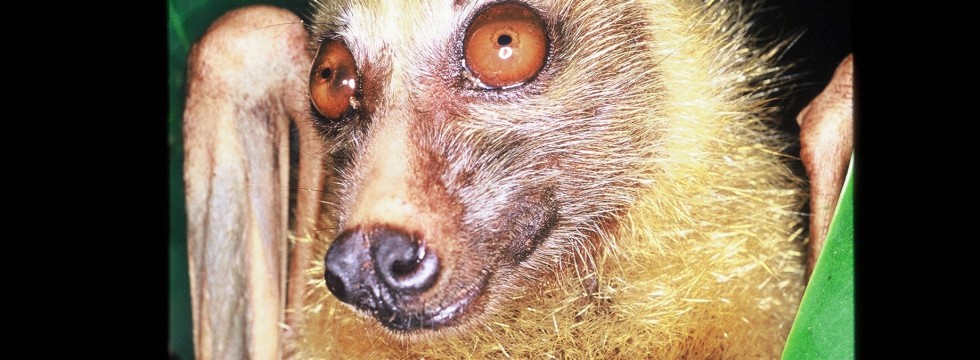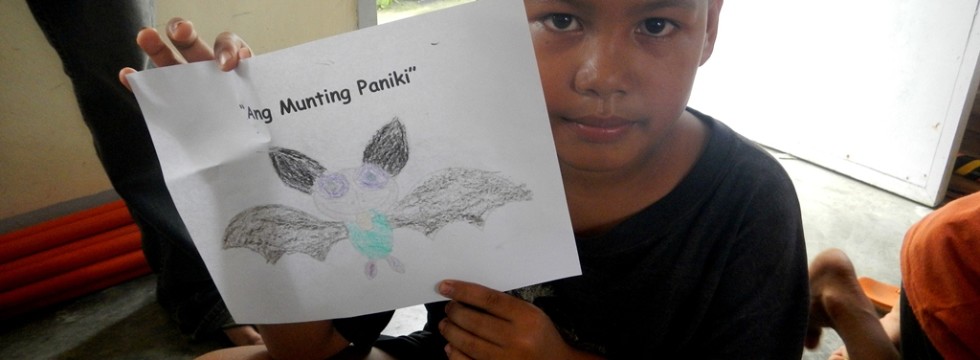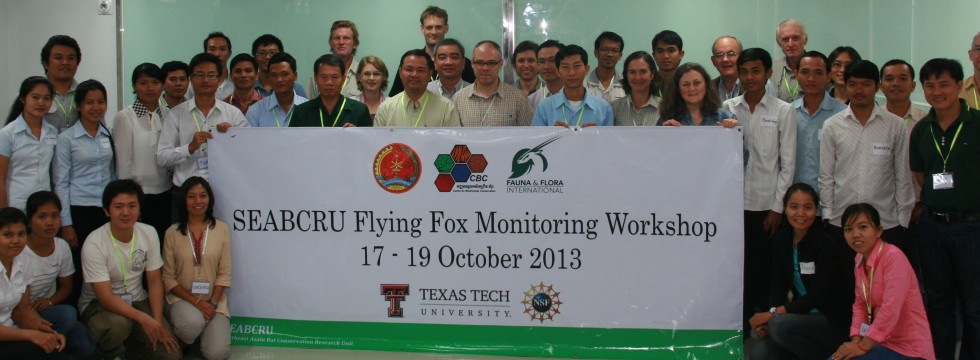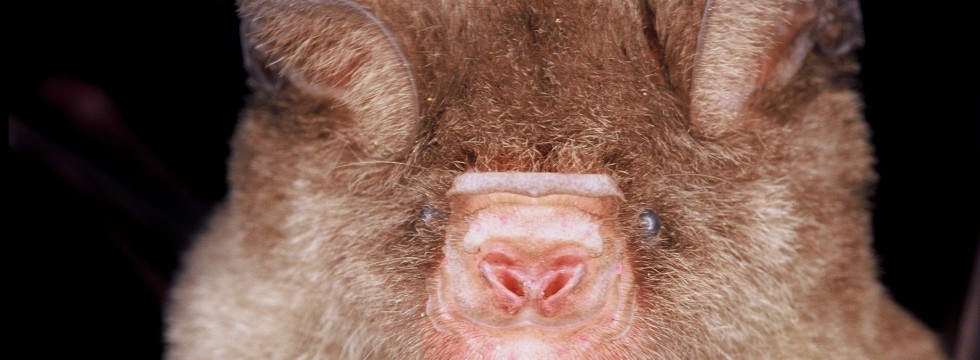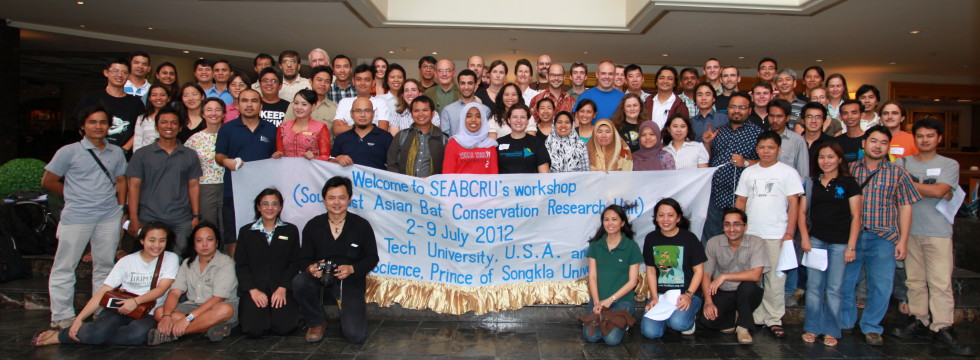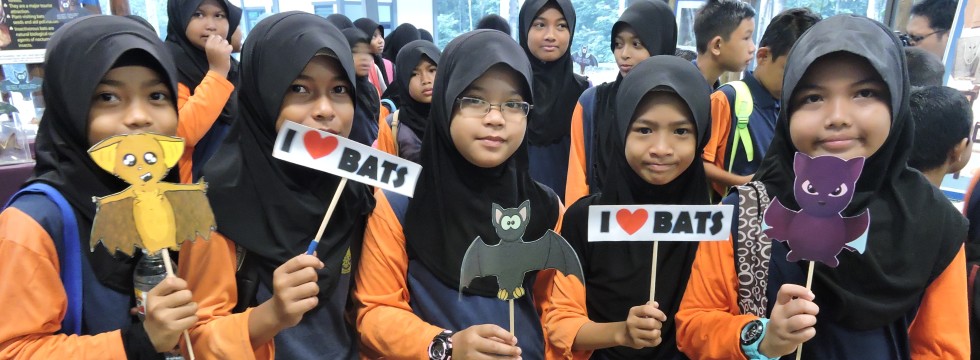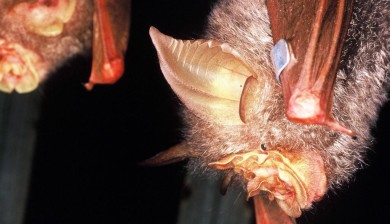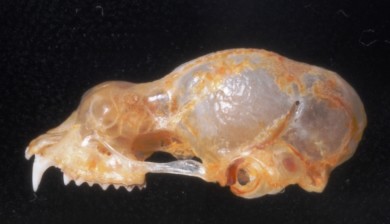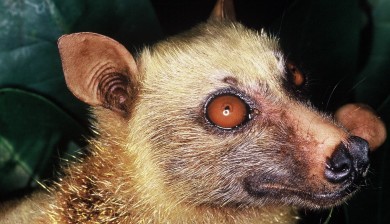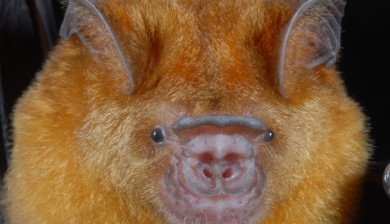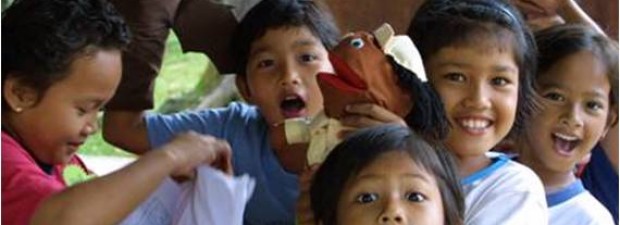Scientists find a new species of horseshoe bat from Southeast Asia by studying an old museum specimen
July 19, 2015
Comments are off
A team of international network of researchers describes a new species of woolly horseshoe bat from Southeast Asia (Malaysia, Indonesia and Thailand). The new species is described from specimens in museums world-wide including a 32 years old spirit specimen. The study (led by SEABCRU member Pipat Soisook) is one of many output of an international collaborative network of researchers in different 11 institutions based in six different countries. The paper is published in the latest issue of Acta
Continue Reading →SEABCRU Priorities
Outreach
Despite their contribution to regional biodiversity, their ecological and economic importance, and their imperiled status, public awareness of the conservation and economic value of bats in Southeast Asia is extremely low, and myths and prejudice abound. Consequently one of the objectives of the SEABCRU is to facilitate the development and implementation of outreach programs.
SEABCRU News
A dark knight with pads – a new Glischropus species from Sumatra
They have typical Pipistrellus appearance but are characterized by the thickened pads at the base of thumbs. They roost in bamboo stalks but are not the flat-headed Tylonycteris of Southeast Asia nor the funnel-eared Kerivoula of Taiwan. The genus Glischropus is a group of small vespe
Foraging ecology of Lyle’s flying fox revealed by GPS tracking
Flying foxes are of ecological importance to Old World plants that depend on them for pollination and seed dispersal; however they are globally threatened by habitat loss and hunting. Lyle’s flying fox is of particular interest because it is a host for the Nipah virus, it frequently l
SEABCRU Fellowships for SEABCO2015
The SEABCRU is providing 20 awards to facilitate students (15) and NGO staff (5) to attend SEABCO2015. Support is in the form of a) conference registration together with b) $100 to be used towards travel or accommodation, to be issued in Kuching. Preference will be given to ASEAN nati
SEABCRU WORKSHOPS AND FORUM AT SEABCO 2015
The SEABCRU is sponsoring several workshops and a forum for SE Asian Bat Conservation embedded within the SEABCO 2015 Conference. The half-day workshops will present the SEABCRU protocols that we have developed with the help of the broad SEABCRU membership over the past four years. Ac
First workshop publication — Guano harvesting in Myanmar by Thet Thet and Khin Mya Mya
Last year, IUCN published guidelines for minimising the negative impact of guano harvesting on bats and called for relevant studies. The first of these has now been published by Thet Thet and Khin Mya Mya of Mandalay University, Myanmar in the open-access Journal of Threatened Taxa. I
Research Assistant position – urban ecology and ecosystem services of bats in Singapore
The National University of Singapore has a vacancy for a Research Assistant within the Department of Biological Sciences JOB DESCRIPTION Looking for a full-time research assistant (RA) for a project investigating the urban ecology of bats in Singapore and the ecosystem services they p
Do you fancy a painted woolly bat on your wall? What about a false vampire?
A frequent traveller browsing the tourist shops and markets of Southeast Asia and East Asia will invariably be introduced to many bats, although very dead and mounted. How are such bats collected in the wild and in what numbers? What is the volume of internet trade involving such souv
Would you rather be bitten by Hipposideros diadema or Kerivoula intermedia?
This was the title Julie and I did not use in the outreach promoting her paper looking at bite force in 35 species of Malaysian bats (we talked about dogs instead). If you said Hipposideros diadema, you really need to read the paper, and if you said the Kerivoula you probably intuiti

